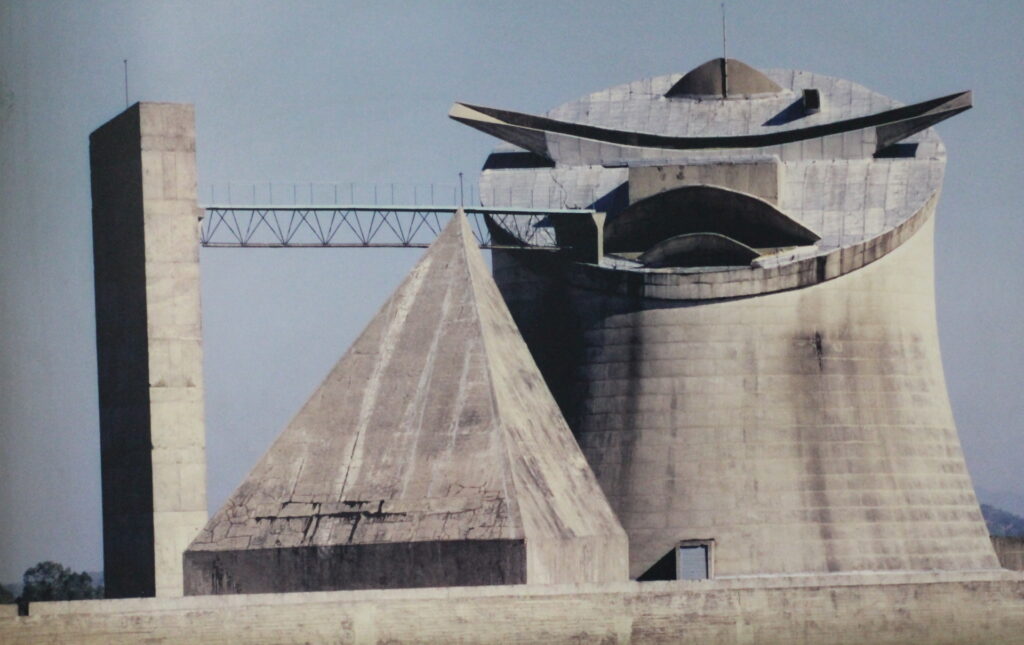The Complex du Capitol de Chandigarh is a masterpiece of monumental and sculptural architecture that celebrates the independence of a nation and the simultaneous opening up towards modernity. It was added to the UNESCO World Heritage Site List in 2016.
Both geographically and symbolically, the Capital Complex Chandigarh is at the creative top of the plan. Situated at the foot of the Shivalik Hills, on the western edge of “Rajendra Park” and with Sukhna Lake on the east, it forms the Capital Park, which spans the width of the city.
The Capital Complex is visually and physically distinct from the rest of the city by a formal concept that embodies the dignity of the two states of Punjab and Haryana and the three fundamental powers of the Chandigarh Administration – executive, legislative and judicial.
It is the largest monumental complex designed and built by Le Corbusier. He designed the three main buildings that make up it – the Palace of the Assembly, the Secretariat and the High Court – but also the furniture, glossy, bas-reliefs molded in concrete, as well as works of art such as the enamel door of the Palace of the Assembly and a collection of monumental tapestries Chain. These three buildings are located on a pedestrian esplanade punctuated by other posthumous Corbusian masterpieces: the Monument of the Open Arm, the Depth of Thought, the Monument to the Martyrs, the Tower of Shadows, the Geometric Hill, as well as the Reflecting Pool. High Court and Legislative Assembly.
Capital blends primary forms drawn from purist geometry with brutalist expression punctuated by polychromy of bold colors in contrast to the monochrome appearance of raw concrete. The buildings combine European modernism – many expressive variations of reinforced concrete – with local techniques and materials. The texture varies according to the type of formwork and surface treatment. To preserve the authenticity of the materials, the exterior surfaces were not coated, but painted in places using Le Corbusier’s special color range.
The composition of the site stems from the desire to integrate architecture into the landscape and to reconcile man, nature and the universe. The human scale is linked to the vast scale of architecture and public space by creating artificial earthen mounds or tree and shrubbery plantings, and glimpses of distant landscapes have been preserved.
Read about more heritage site
Frequently Asked Questions About Complex du Capitol, Chandigarh
Q. When did Le Corbusier design Chandigarh?
A – On 15 August 1947, on the eve of India’s independence from the United Kingdom, a directive came that would change the subcontinent for the next six decades.
Q. What is Le Corbusier Chandigarh?
A – Chandigarh, the city of dreams of the first Prime Minister of India, Mr. Jawaharlal Nehru was planned by the famous French architect Le Corbusier. Picturesquely situated in the foothills of Shivaliks, it is known as one of the best experiments in urban planning and modern architecture in India in the twentieth century.
Q. Who designed Chandigarh before Le Corbusier?
A – In 1949, American planner and architect Albert Mayer was commissioned to design a new city called “Chandigarh”. The government carved out Chandigarh from about fifty Pudi speaking villages in the then state of East Punjab, India.
Q. Who was the chief architect and designer of Chandigarh city?
A – The master plan was developed by Le Corbusier who also designed the capital complex and established architectural control and design of the city’s main building.
Q. What is special in Chandigarh?
A – Also known as the city beautiful, Chandigarh was designed by the Swiss-French modernist architect, Le Corbusier. Apart from the city’s architecture and buildings such as the Capitol Complex, High Court, Secretariat, Legislative Assembly and huge open hand monument, it is also famous for its clean streets and greenery.
Q. What architectural style is Le Corbusier?
A – Le Corbusier pioneered the residential architectural style known as Dom-ino. The name, referring to the Latin domus, or house, and the board game dominoes, reflects the style of pilotis’ form of game tiles.













